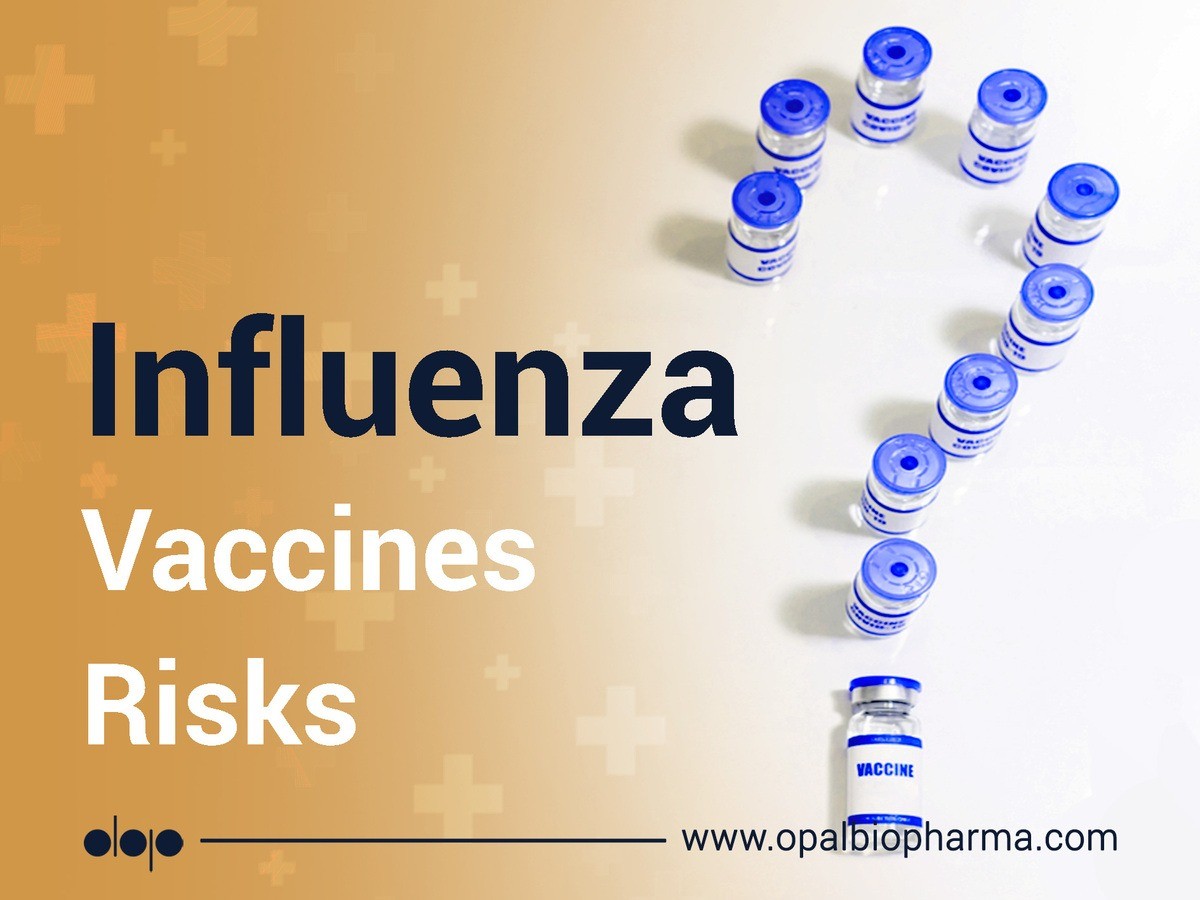Introduction
The Influenza vaccine has remained a cornerstone in the preventive healthcare domain, significantly aiding in the reduction of seasonal flu incidences. Nevertheless, like other medical interventions, it is accompanied by certain risks. The dialogue surrounding Influenza vaccine risks is not only fundamental for informed public discussions but also crucial for personal decision-making regarding vaccination. This article seeks to delve into the risks tied to the Influenza vaccine alongside the latest updates for the 2023-2024 flu season, the benefits of vaccination, and the broader outlook of influenza management with and without the vaccine. The objective is to furnish a balanced narrative that facilitates informed decisions among individuals and healthcare providers regarding Influenza vaccination.
Unveiling the Influenza Vaccine Risks
Understanding the potential risks associated with the influenza vaccine is essential for fostering an informed and empowered community capable of making educated decisions regarding vaccination. In an era where public health and disease prevention take center stage, grasping the intricacies of influenza vaccine risks equips individuals with the knowledge necessary to make informed choices about their health. This knowledge allows them to carefully assess the possible side effects and benefits, enabling a more personalized approach to vaccination. An informed community not only makes educated decisions but also engages in open and constructive dialogues about vaccine safety and efficacy. Furthermore, such awareness builds trust in healthcare systems and vaccination programs, ultimately boosting overall vaccine uptake rates. Disseminating comprehensive information about influenza vaccine risks is a pivotal step in strengthening public health, nurturing a sense of responsibility, and ensuring the well-being of society as a whole.
Common Side Effects
The common side effects of the Influenza vaccine include headache, fatigue, cough, low fever, and arm soreness, which typically resolve within a couple of days.
Severe Allergic Reactions
Severe allergic reactions to the Influenza vaccine are rare, occurring in fewer than 1 in a million individuals, manifesting as difficulty breathing, hoarseness, swelling around the eyes or lips, and dizziness, among others.
Misconceptions
A common misconception is that the Influenza vaccine can cause the flu, which is incorrect. The vaccine cannot cause influenza; however, individuals might still contract the flu if exposed to the virus shortly before or after vaccination before immunity develops.
Latest Updates on Influenza Vaccine for 2023-2024 Season
The 2023-2024 Influenza vaccine formulation has been meticulously crafted to align with the prevailing strains of the virus, emphasizing a considerable reduction in thimerosal content and a notable percentage being entirely free from egg-based components. This formulation represents a forward-thinking approach to influenza prevention, reflecting the ongoing efforts of the medical and scientific communities to enhance the safety and accessibility of the vaccine. Tailoring the vaccine to match the circulating strains of the virus closely not only optimizes its effectiveness but also minimizes the likelihood of potential side effects. The reduced thimerosal content addresses concerns surrounding this preservative, while the egg-free options cater to individuals with egg allergies, ensuring a more inclusive vaccination strategy. This development highlights the commitment to improving public health through innovative vaccine design, ultimately bolstering the global fight against influenza.
Effectiveness
The vaccine for the 2023 Southern Hemisphere influenza season demonstrated a 52% reduction in the risk for influenza-associated hospitalizations, indicating a positive trend in vaccine effectiveness.
Vaccine Composition
All influenza vaccines available for this season in the United States are quadrivalent, covering a broader spectrum of influenza virus strains.
Advantages of Influenza Vaccination
Despite the inherent risks associated with the Influenza vaccine, its role in mitigating the incidence and severity of the flu is undeniably pivotal, making a substantial contribution to the attainment of global public health goals. The vaccine’s significance lies in its capacity to act as a formidable shield against the annual influenza outbreaks, effectively curbing the spread of the virus and diminishing the severity of symptoms. By doing so, it plays a crucial role in minimizing the overall burden on healthcare systems, preventing hospitalizations, and potentially saving lives, especially among vulnerable populations. Furthermore, the Influenza vaccine is instrumental in achieving widespread immunity, thereby facilitating the safeguarding of communities and reducing the likelihood of flu-related complications. While the vaccine is not devoid of risks, the benefits it bestows upon society are undeniable, emphasizing the critical role it plays in bolstering public health efforts worldwide. As we navigate the complex landscape of infectious diseases, the Influenza vaccine remains a cornerstone of our defense, reinforcing the resilience and well-being of global populations.
Reduction in Hospitalizations
Influenza vaccination significantly reduces the risk of influenza-associated hospitalizations, especially among vulnerable populations like the elderly and individuals with chronic health conditions.
Herd Immunity
High vaccination rates lead to herd immunity, which is crucial in reducing the overall burden of influenza within communities.
Future of Influenza with and Without Vaccination
The trajectory of influenza control is profoundly influenced by the extent of coverage and the adoption of the Influenza vaccine within diverse demographics and regions. The vaccine’s impact transcends individual protection, extending to the broader community and even global health. The degree to which populations, both demographically and geographically, embrace this preventive measure has far-reaching consequences. The widespread adoption of the Influenza vaccine serves as a linchpin in mitigating the spread of the virus. It not only shields individuals from potential infection but also forms a collective barrier, reducing transmission rates and the likelihood of flu outbreaks. Moreover, the effectiveness of influenza control strategies is contingent upon equitable vaccine distribution, ensuring that all groups, including vulnerable populations, have access to and embrace vaccination.
In essence, the Influenza vaccine becomes an instrumental force in shaping the course of influenza control efforts, charting a path toward diminished disease burden and bolstering public health resilience. It highlights the interdependence of individuals, communities, and regions in the global mission to combat this infectious disease.
Projected Reduction in Disease Incidence
With widespread vaccination, the potential to significantly reduce the incidence and impact of influenza is immense.
Challenges and Vaccine Hesitancy
Various challenges, including vaccine hesitancy due to Influenza vaccine risks, can hinder the path toward achieving comprehensive vaccination coverage.
Current Health and Vaccination Situation Regarding Influenza
The recommendation for routine influenza vaccination extends to individuals aged 6 months and older as a foundational strategy in the prevention of influenza and its potentially severe complications. This guidance underscores the universality of the flu threat, transcending age groups, and emphasizes the vaccine’s role in safeguarding public health. By targeting this wide age range, routine influenza vaccination seeks to create a broad shield of immunity across communities. It not only lowers the risk of infection in individuals but also reduces the overall incidence of flu, thereby alleviating the strain on healthcare resources and curbing the potential for severe complications, hospitalizations, and even fatalities, particularly among high-risk populations. In essence, the recommendation for universal vaccination from the age of 6 months symbolizes a proactive approach to public health. It is a fundamental step towards achieving a resilient defense against the influenza virus. It underscores the importance of collective responsibility in protecting individuals and communities from this contagious and potentially life-threatening disease.
Global Vaccination Rates
Global vaccination rates for Influenza depict a diverse picture, indicating the disparities in vaccine access and acceptance across different regions.
Addressing Vaccine Hesitancy
Addressing vaccine hesitancy, fueled by concerns over Influenza vaccine risks, is crucial for improving vaccination uptake.
Towards the end of our discussion, it’s worth mentioning the role of biopharmaceutical companies in addressing the challenges and advancing the field of preventive healthcare. One such entity is Opal Bio Pharma (OBP), the first biopharmaceutical company in Oman, which is emerging as a notable player in the development of biosimilar vaccines, medicines, and treatment methods. Although not directly related to Influenza vaccines, the endeavors of OBP signify a stride towards self-sufficiency in healthcare and a commitment to global health improvement.
Conclusion
The discourse on Influenza vaccine risks is a nuanced yet critical aspect of the broader conversation on influenza disease prevention. While the risks associated with the Influenza vaccine are a legitimate concern, they should be evaluated in the context of the substantial benefits the vaccine offers. Through a balanced and well-informed discussion on Influenza vaccine risks, individuals, healthcare providers, and policymakers can make better decisions toward achieving broader public health goals.

